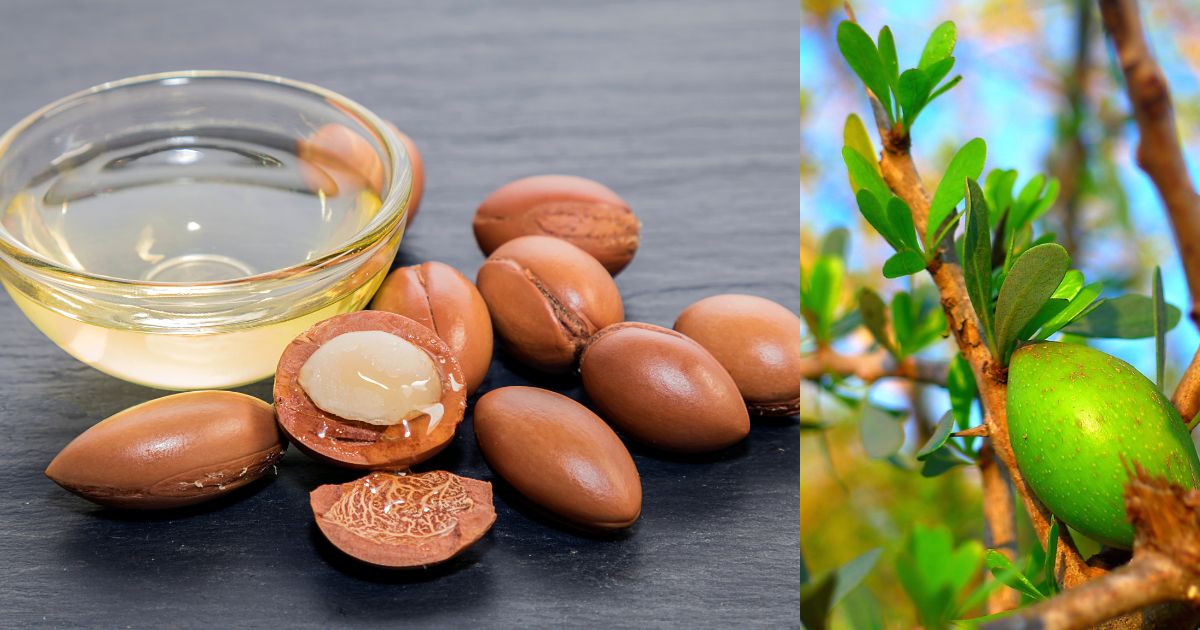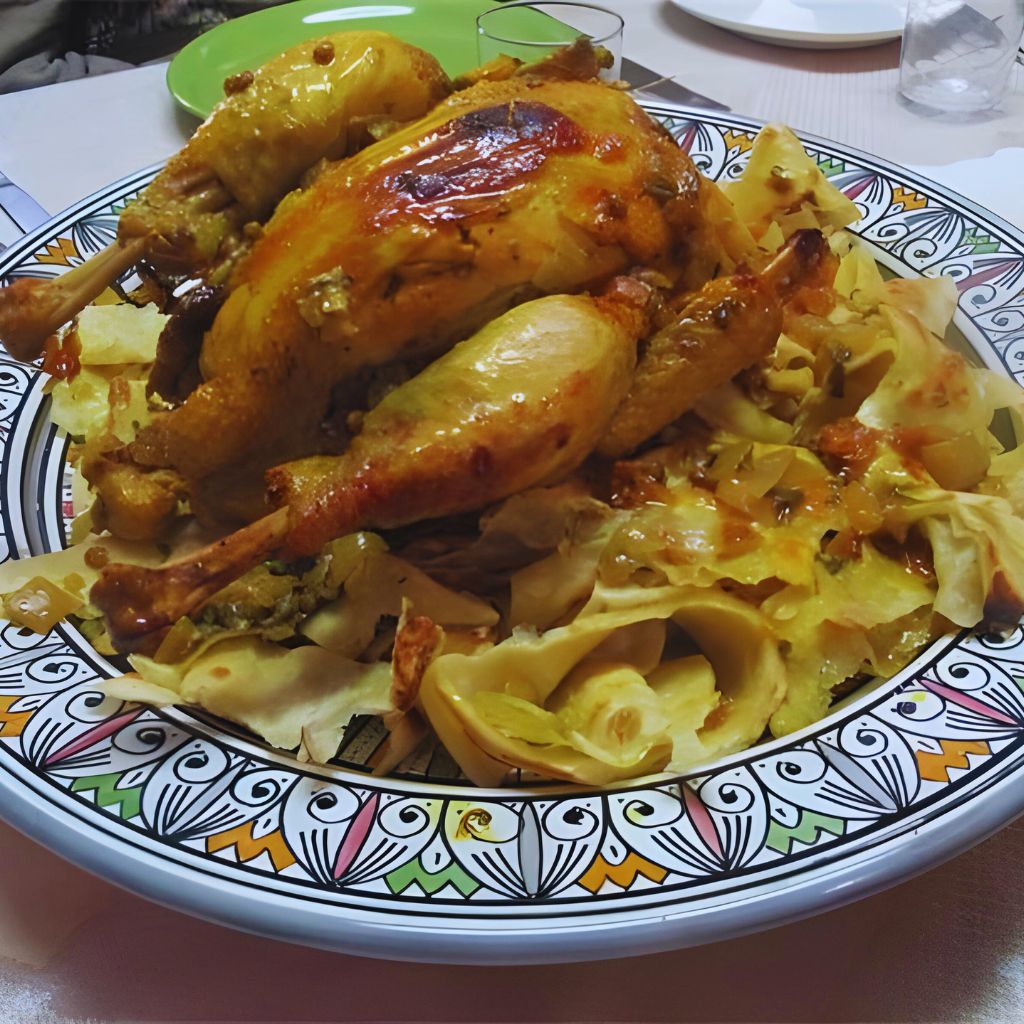Embark on a culinary adventure through the Rif Mountains of Morocco, where ancient traditions meet modern gastronomy. Discover the unique flavors of Moroccan cuisine from the Rif Mountains, a region renowned for its fresh ingredients, traditional dishes, and immersive culinary experiences.
The Bounty of the Rif: A Culinary Treasure Trove
The Rif Mountains are a fertile region, blessed with an abundance of fresh produce and seafood. Olive groves, almond orchards, and citrus groves paint the landscape, while the Mediterranean coast provides a bounty of fresh fish and shellfish. This abundance of nature’s bounty forms the foundation of Moroccan cuisine from the Rif Mountains, showcasing a vibrant tapestry of flavors.
A Symphony of Herbs and Spices
The Rif Mountains are renowned for their diverse flora, home to a wealth of wild herbs that infuse the region’s cuisine with unique aromas and flavors. From the pungent notes of wild thyme and rosemary to the delicate fragrance of chamomile and mint, these herbs add complexity and depth to every dish.
Common Rif Herbs and Their Uses
| Herb | Flavor Profile | Culinary Uses |
|---|---|---|
| Wild Thyme | Earthy, pungent | Adds depth to tagines, stews, and grilled meats |
| Rosemary | Piney, slightly bitter | Enhances the flavor of lamb, chicken, and seafood dishes |
| Chamomile | Floral, slightly sweet | Used in teas, desserts, and savory dishes for a delicate touch |
| Mint | Refreshing, cooling | Adds a bright flavor to salads, soups, and drinks |
Argan Oil: A Liquid Gold

Beyond the herbs, the Rif Mountains are also home to the argan tree, a source of the prized argan oil. This golden oil, extracted from the tree’s nuts, is a staple ingredient in Moroccan cuisine from the Rif Mountains, adding a nutty, slightly bitter flavor and a rich texture to dishes. Argan oil is also celebrated for its health benefits, making it a true culinary treasure.
Traditions and Uses of Argan Oil
- Traditional Extraction: Argan oil is traditionally extracted by hand, a labor-intensive process that involves cracking the nuts, removing the kernels, and grinding them into a paste.
- Beyond Cooking: Argan oil is not only used in cooking but also in cosmetics and skincare due to its rich antioxidant and moisturizing properties.
- Argan Oil in Rif Cuisine: It’s often used as a finishing oil for salads, soups, and tagines, adding a nutty depth and a luxurious feel.
Seafood Delights from the Mediterranean Coast
The Rif Mountains are nestled along the Mediterranean coast, offering a rich bounty of seafood. Fresh catches of sardines, mackerel, tuna, and octopus are staples in Moroccan cuisine from the Rif Mountains, often prepared with simple techniques that allow the natural flavors to shine.
Sustainable Seafood Practices in the Rif
The Rif region is committed to sustainable fishing practices to ensure the preservation of its marine resources. Local fishermen use traditional techniques and respect seasonal fishing regulations to maintain a healthy balance in the ecosystem.
The Heart of Rif Cuisine: Traditional Dishes
Beyond the abundance of ingredients, Moroccan cuisine from the Rif Mountains is defined by its traditional dishes, passed down through generations. These dishes are not only delicious but also reflect the region’s cultural heritage and the deep connection to the land.
Rfissa: A Celebration of Flavors

Rfissa is a celebratory dish, often served at weddings and other special occasions. This layered dish features msemen, a flaky flatbread, topped with a savory mixture of lentils, chicken, and spices. The layers are gently steamed, creating a symphony of textures and flavors.
Recipe for Rfissa:
- Ingredients:
- 1 cup dried lentils, rinsed
- 1 whole chicken, cut into pieces
- 1 onion, chopped
- 2 cloves garlic, minced
- 1 tsp cumin
- 1 tsp paprika
- 1/2 tsp turmeric
- 1/4 tsp saffron threads
- Salt and pepper to taste
- 1 cup chicken broth
- 1 cup water
- 12 msemen (flaky flatbreads)
- Instructions:
- In a large pot, combine lentils, chicken, onion, garlic, cumin, paprika, turmeric, saffron, salt, and pepper. Add chicken broth and water.
- Bring to a boil, then reduce heat and simmer for 1 hour, or until chicken is cooked through and lentils are tender.
- Remove chicken and shred. Return to the pot.
- Layer msemen in a large serving dish. Spoon the lentil mixture over the msemen.
- Cover with a lid or foil and steam for 15 minutes. Serve hot.
Msemen: A Versatile Flatbread
Msemen is another staple of Moroccan cuisine from the Rif Mountains, a versatile flatbread that can be enjoyed in various ways. The dough is kneaded with a touch of olive oil and spices, creating a flaky and slightly chewy texture. Msemen is often served with honey, butter, or jams, but it can also be used as a wrap for savory fillings.
Recipe for Msemen: Moroccan Msemen Recipe: A Staple of Moroccan Cuisine
Seafood Tagines: A Fusion of Flavors

Seafood tagines are a popular choice in Moroccan cuisine from the Rif Mountains, showcasing the region’s abundance of fresh fish and shellfish. These slow-cooked stews feature a variety of seafood, combined with aromatic herbs, spices, and vegetables. The result is a flavorful and comforting dish that celebrates the bounty of the Mediterranean.
Recipe for Seafood Tagine:
- Ingredients:
- 1 lb mixed seafood (fish, shellfish, squid, etc.)
- 1 onion, chopped
- 2 cloves garlic, minced
- 1/2 cup chopped tomatoes
- 1/4 cup olive oil
- 1 tsp cumin
- 1/2 tsp paprika
- 1/4 tsp saffron threads
- 1/4 cup chopped fresh parsley
- 1/4 cup chopped fresh cilantro
- Salt and pepper to taste
- 1/2 cup water
- Instructions:
- Heat olive oil in a tagine or large pot over medium heat. Add onion and garlic and cook until softened.
- Add tomatoes, cumin, paprika, saffron, parsley, cilantro, salt, and pepper. Cook for 5 minutes, stirring occasionally.
- Add seafood and water. Bring to a boil, then reduce heat and simmer for 15-20 minutes, or until seafood is cooked through.
- Serve hot with crusty bread.
Herby Salads and Stews: A Celebration of Freshness
The abundance of herbs in the Rif Mountains is reflected in the region’s salads and stews. These dishes feature a variety of fresh herbs, combined with seasonal vegetables and often a touch of lemon or olive oil. The result is a vibrant and flavorful dish that celebrates the simplicity and freshness of Moroccan cuisine from the Rif Mountains.
Recipe for Herby Salad with Argan Oil:
- Ingredients:
- 1 cup mixed greens (arugula, spinach, lettuce)
- 1/2 cup chopped tomatoes
- 1/4 cup chopped cucumbers
- 1/4 cup chopped red onion
- 1/4 cup chopped fresh parsley
- 1/4 cup chopped fresh cilantro
- 2 tbsp lemon juice
- 1 tbsp argan oil
- Salt and pepper to taste
- Instructions:
- Combine greens, tomatoes, cucumbers, red onion, parsley, and cilantro in a large bowl.
- Drizzle with lemon juice and argan oil. Season with salt and pepper to taste.
- Toss to combine and serve immediately.
Culinary Experiences in the Rif Mountains
Exploring the Rif Mountains is a journey for the senses, and the region’s culinary scene offers a wealth of experiences for food enthusiasts.
Markets Overflowing with Flavors
The bustling markets of the Rif Mountains are a sensory feast, overflowing with fresh produce, spices, and seafood. Here, you can immerse yourself in the local culture, witnessing the vibrant exchange of flavors and traditions.
Restaurants and Cafes: A Taste of Local Life
The Rif Mountains are home to a variety of restaurants and cafes that offer a taste of local life. From cozy family-run eateries to sophisticated restaurants with panoramic views, these establishments provide an opportunity to sample authentic Moroccan cuisine from the Rif Mountains.
Hands-on Learning: Cooking Classes in the Rif
For those who want to delve deeper into the culinary traditions of the Rif, cooking classes offer an unforgettable experience. Local chefs share their expertise, guiding participants through the preparation of traditional dishes and revealing the secrets of Moroccan cuisine from the Rif Mountains.
Regional Variations: A Tapestry of Flavors
Within the Rif Mountains, Moroccan cuisine from the Rif Mountains varies between coastal and mountainous areas, reflecting the local ingredients and traditions. Coastal areas, with their access to fresh seafood, feature dishes like seafood tagines and grilled fish, while mountainous regions emphasize hearty stews, herby salads, and dishes featuring local produce.
Festivals and Events: Celebrating Rif Cuisine
The Rif Mountains host various festivals and events that celebrate the region’s culinary heritage. Harvest festivals, food fairs, and cultural celebrations often feature traditional Rif dishes, offering visitors a chance to sample local delicacies and experience the vibrant food culture.
Sustainable Practices: Preserving the Rif’s Bounty
Local farmers and fishermen in the Rif Mountains are committed to sustainable practices to preserve the region’s natural resources. Organic farming, responsible fishing techniques, and initiatives promoting local food production contribute to a sustainable food system.
Modern Interpretations: Rif Cuisine Evolves
While Moroccan cuisine from the Rif Mountains is rooted in tradition, it is also evolving, as modern chefs reinterpret classic dishes with a contemporary twist. These innovations showcase the region’s culinary creativity and adaptability, while maintaining the essence of Rif flavors.
A Fusion of Traditions: Rif Cuisine Meets the World
Modern Rif chefs are embracing a fusion of flavors, blending traditional ingredients and techniques with global culinary influences. This innovative approach results in dishes that are both familiar and exciting, showcasing the versatility and adaptability of Moroccan cuisine from the Rif Mountains.
The Culinary Legacy of the Rif Mountains
The Rif Mountains offer a unique culinary journey, one that celebrates the region’s rich history, diverse ingredients, and vibrant culture. Through its traditional dishes, modern interpretations, and immersive culinary experiences, Moroccan cuisine from the Rif Mountains invites you to savor the flavors of a land where ancient traditions meet modern gastronomy.
FAQ
Q: What are some of the most popular dishes from the Rif Mountains?
A: Some of the most popular dishes from the Rif Mountains include Rfissa, Msemen, seafood tagines, and herby salads and stews.
Q: Where can I find authentic Moroccan cuisine from the Rif Mountains in Morocco?
A: You can find authentic Rif cuisine in local markets, restaurants, and cafes throughout the Rif region. Some popular destinations include Chefchaouen, Tetouan, and Al Hoceima.
Q: What are some tips for making Moroccan cuisine from the Rif Mountains at home?
A: To make authentic Rif dishes at home, use fresh, local ingredients whenever possible. Pay attention to the unique spice blends used in the region, and don’t be afraid to experiment with different herbs and flavors.
Q: How does Moroccan cuisine from the Rif Mountains differ from other Moroccan culinary styles?
A: Moroccan cuisine from the Rif Mountains is known for its emphasis on local, fresh ingredients, particularly wild herbs and seafood. It also features distinctive spice blends and cooking techniques that reflect the region’s unique culinary heritage.
Q: What are some of the unique spices used in Moroccan cuisine from the Rif Mountains?
A: Some of the unique spices used in Moroccan cuisine from the Rif Mountains include cumin, coriander, saffron, and a variety of aromatic herbs, such as thyme, rosemary, and mint.
Q: Is there a specific type of seafood that is popular in the Rif?
A: Fresh catches of sardines, mackerel, tuna, and octopus are staples in the region’s cuisine, often prepared with simple techniques that allow the natural flavors to shine.
Q: What are some of the cultural traditions associated with Moroccan cuisine from the Rif Mountains?
A: Moroccan cuisine from the Rif Mountains is deeply intertwined with the region’s cultural traditions. Dishes like Rfissa are often served at weddings and other special occasions, while family meals are a central part of daily life.
Q: How can I learn more about the history of Moroccan cuisine from the Rif Mountains?
A: You can learn more about the history of Moroccan cuisine from the Rif Mountains by exploring local markets, visiting restaurants and cafes, and participating in cooking classes. There are also numerous books and websites that provide information about the region’s culinary heritage.
Resources for Further Exploration
Websites:
Books:




